What are some of the most notable games for the Sega Genesis? Ask this question to anyone familiar with the console's library and people will bring up Sonic the Hedgehog, Streets of Rage, Gunstar Heroes, and a few other games, as the prime examples of games on the console that shine above the rest.
But when there's a list of games that are widely considered the best for any system, that seems to be widely agreed upon as being the best of the best, it's only natural that some gems will slip through the cracks and go unnoticed to many gamers. This retrospective is where I'll bring up a game that fits squarely into that category in my eyes, and give some more attention to an overlooked diamond that deserves more love. Perhaps there's even other people reading this who know of the game and can back me up on this.
Kid Chameleon is a game released in 1992 for the Genesis (the same year as Sonic 2), and while you'll sometimes see a few people bring it up as a gem for the system, it doesn't seem to happen anywhere near as frequently as people bring up what are typically considered the best games on the Genesis. There doesn't seem to be that many who know this game exists, but nearly every person that I know, aware of this game's existence, have spoken relatively highly of it. I actually streamed this game on Discord to some friends who saw it for the first time that way, and they pretty much fell in love with the game right then and there.
And despite the game's relative obscurity, it appears to have an extremely strong cult following since the game is often a mainstay inclusion in most Genesis compilations, which appears to be through its cult appeal alone. Evidently, the game seems to have hit strides with quite a few people if it means that it tends to get re-released on these compilation discs/programs as often as it does… which kinda' proves my point. I don't see that many people talk about Kid Chameleon, even though the game is really good and there seems to be a strong enough amount of support to justify its inclusion into Genesis game collections.
The Premise
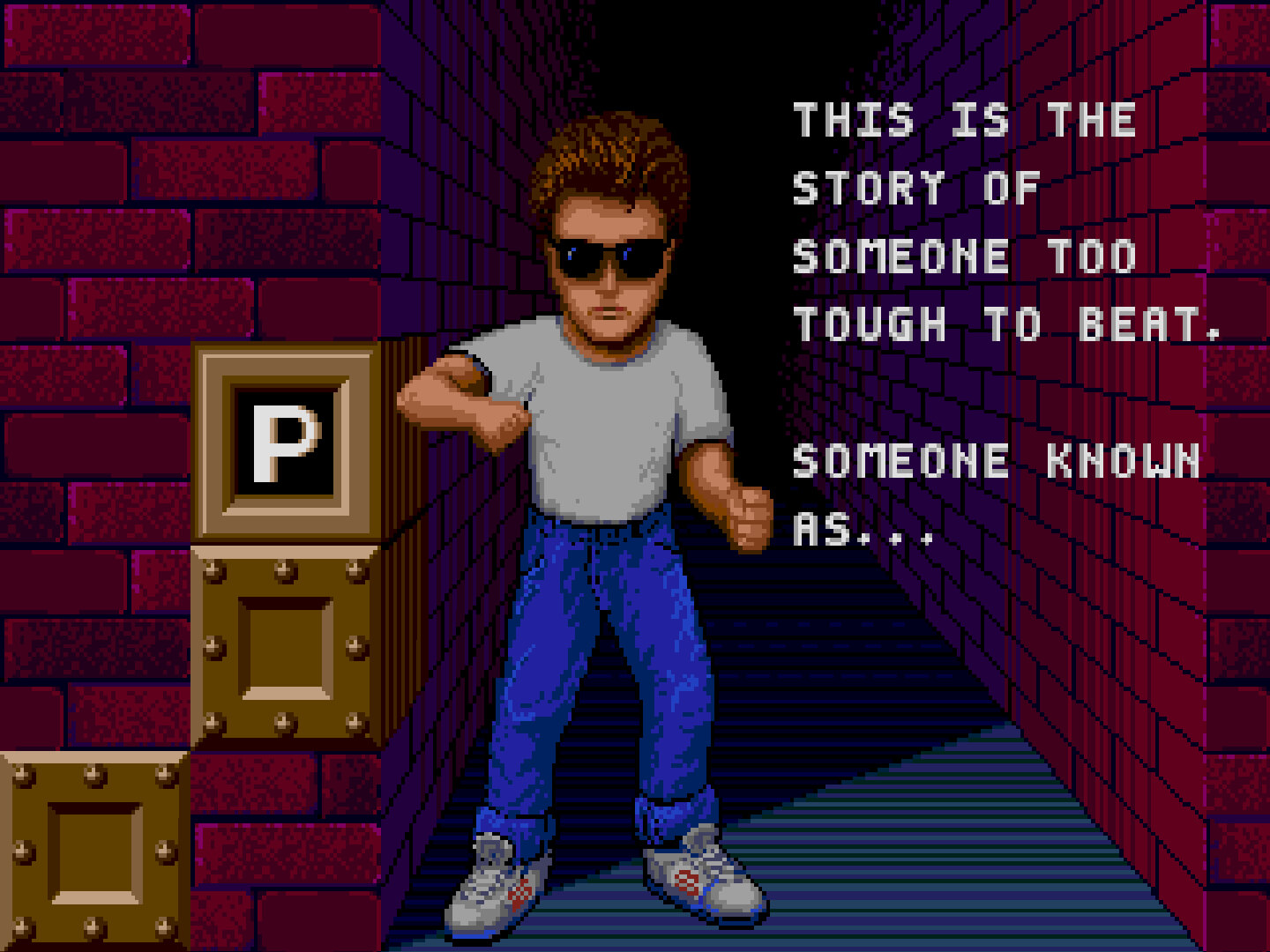
Unfortunately, you can't actually do this elbow move in the game.
Well I'm glad you asked. This game is about a new machine opening up at an arcade that uses holographic computer-y mumbo-jumbo to create levels that the player would physically explore, that were not their own.
Unfortunately, this was a little bit too real. The final boss of the game, called Heady Metal (phenomenal pun, I know), became sentient and started kidnapping kids who weren't able to beat the game. This is where you, the player character (pictured above), decide to take action to step into the machine yourself, beat the game, and rescue all of those kids.
Now the story of the game is… inconsequential at best. This context is brought up at the opening cutscene, and then it's pretty much forgotten about entirely for the whole journey until after you beat the final boss. Any type of storyline aspect serves more as flavor than an actual driving force for the player. Some people may view this as a negative, but I personally don't really mind this. After all, people say that a game is only as good as its gameplay. Speaking of which…
What are We Looking at Here?
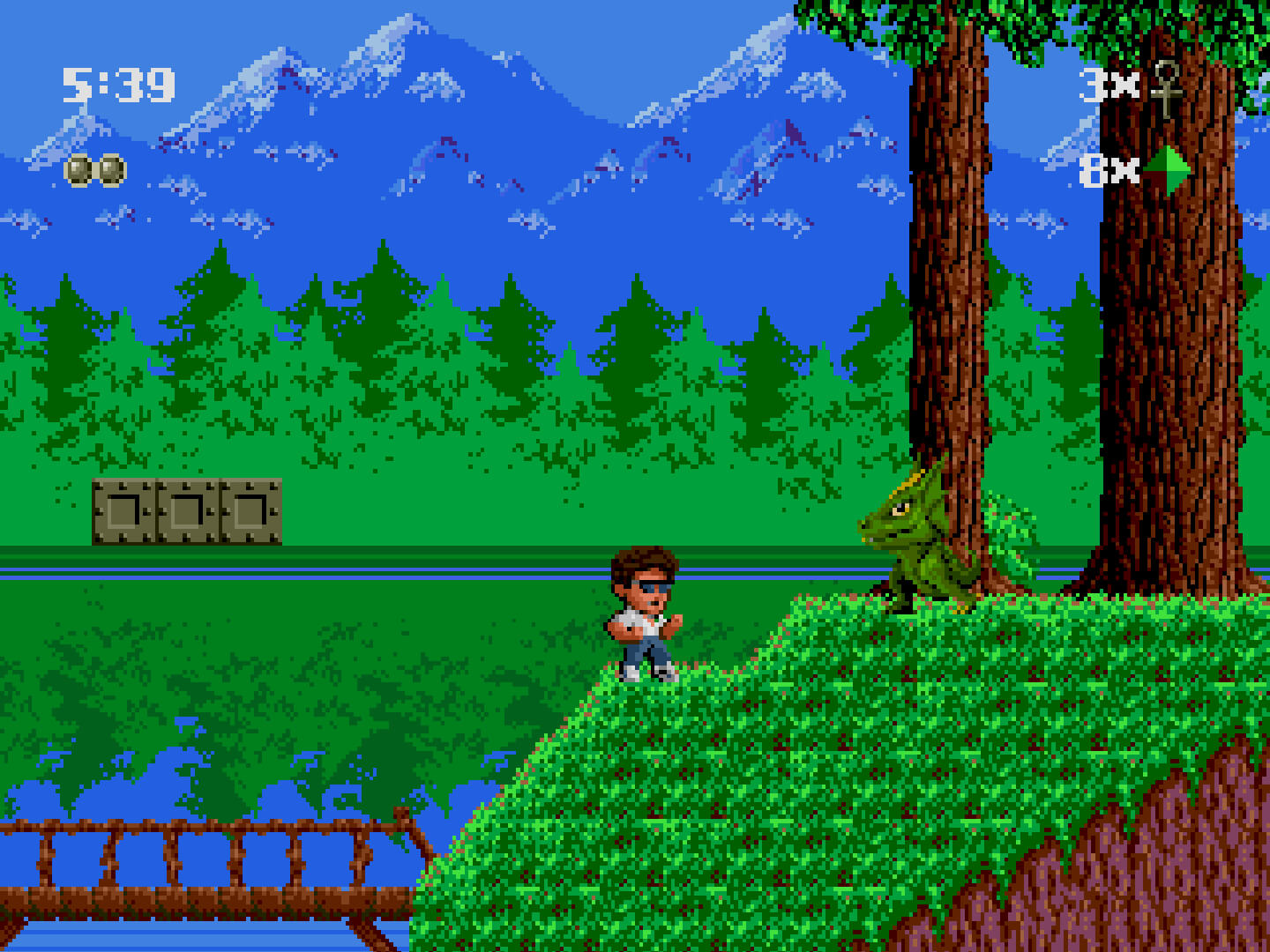
Lush, tranquil forests. Calming, reflective lakes. Armless, fire-breathing dragons. It's all here.
… it's about time that we actually get into the game itself. The HUD of the game is quite minimalistic and out of the way. Almost every part of the screen is reserved specifically for the level.
At the top-left of the screen, you have a timer and two dots. The timer is… well, your timer. It starts at 3 minutes and it counts down. If you run out of time, you lose a life. The two dots represent your health. As the kid, once you take two hits, you die. At the top-right is a counter for ankhs and diamonds. The ankhs represent how many lives you have, and the diamonds represent how many diamonds you have (who would've thought?).
The game does keep track of your score, although you can't see it while you're in the middle of the level. You only see it after you beat a level via touching a flagpole. Not that seeing your score in the middle of the level would be of any use to you since you can't actually increase your score while in a level (except for one means which I will mention later).
Here in the Woods levels, the diamonds are green, but the color will change on other level themes (and this even applies for other collectables and blocks too). One of my favorite things about this game is the amount of visual variety in both the stage aesthetics and the enemies. You'll find yourself running through woods, over mountains, through caves, and on top of skyscrapers. If you notice the bipedal, armless dragon in the picture, that's just one of the several different enemy types in the game, and sometimes the enemies get pretty freaking weird.
Gameplay
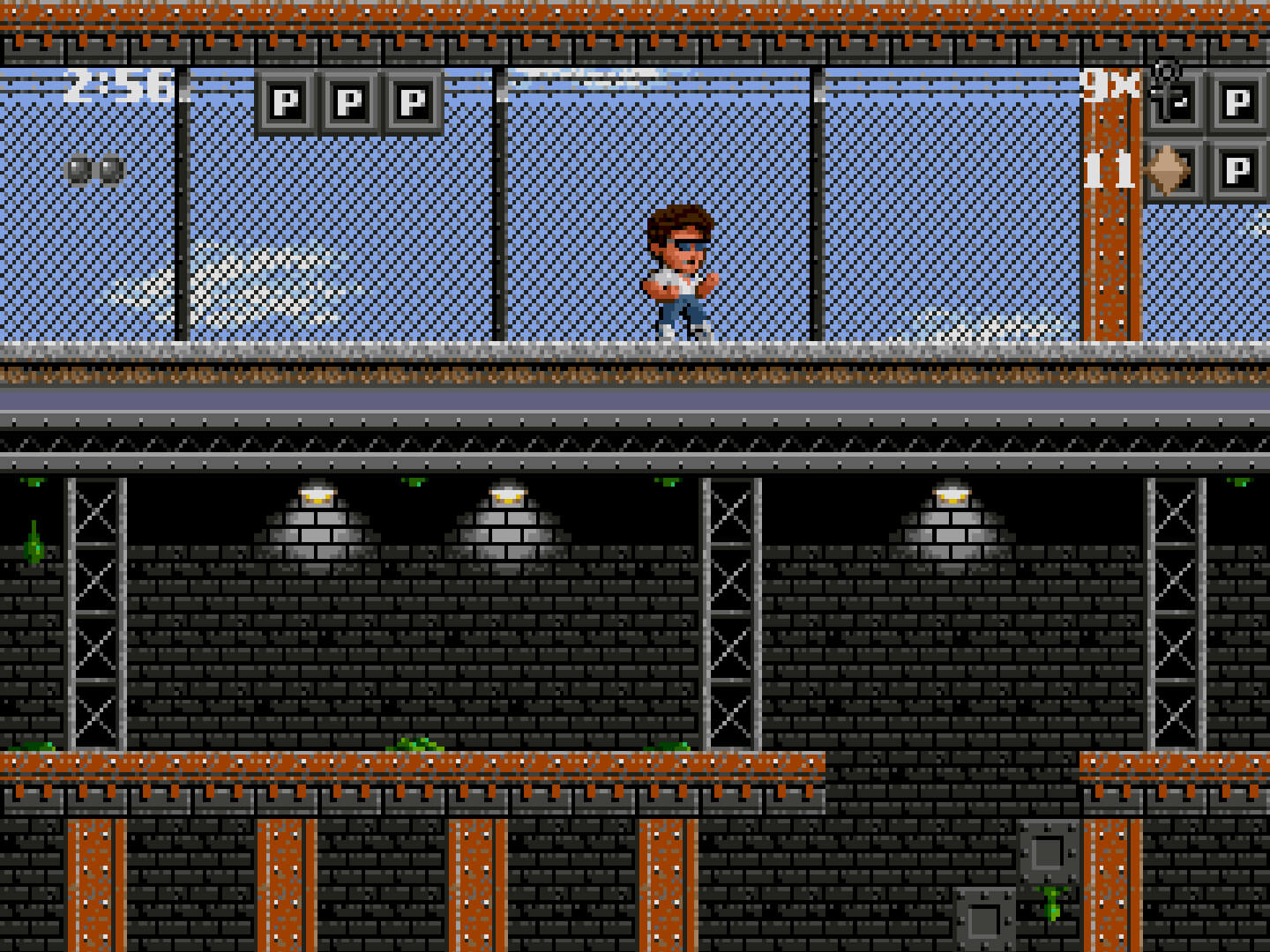
Where are you? Elsewhere. Where else would I be?
The game ultimately has the same goal as most other platformers. You start at one part of the stage and you have to make it to the other. But you don't just play most of the levels in any specific order because the game constantly throws branching paths at you that take you to entirely different levels. There are a total of 103 levels in the game, but you don't ever actually visit them all in a single playthrough. Only about half of them are on the 'main path' and the rest are taken through detours. The highest number of levels you can visit in one playthrough is 91.
That many levels sounds like quite a lot. Not to panic though, because most of the levels in the game are quite short and will realistically take you only about 1 or 2 minutes to beat (assuming you aren't hunting for collectables). 32 of the levels in the game are referred to as "Elsewhere" levels which are even shorter than the former and take up about 4 screens worth of content. 4 of the levels in the game are boss levels.
But 32 "Elsewhere" levels and 71 "main" levels sounds like it would take a really long time even if the levels are short and you don't actually go to all of them. You would be right, this game does take quite a while to beat. This amount of time will, of course, vary on several factors, but you will need perhaps a free evening to beat this game. Nowadays, I can beat the game in under 2 hours with my standard path (that doesn't take any major shortcuts) with not much difficulty, but some players may find that it takes them 3 or maybe even 4 hours to beat the whole game.
Does the game have any type of saving or password system? Nope. The Sega Genesis is fairly infamous for the fact that it doesn't naturally have any save system. Only a few select games on the console have the ability to save your progress as a feature of the cartridge and not the machine. With no saving and no passwords, you're starting every playthrough from the very first level of the game. That said, many ports of the game (as part of Genesis compilations) would include a save system of it.
This is definitely one of the most contentious aspects of the game, and it makes sense why. If you're going to play the game, you need to make sure that you have at least a few hours of uninterrupted free time. Or you know… just play a version that has save states. I wouldn't say that this contributed to why the game is overlooked though. Super Mario Brothers 3 is of a relatively similar length and that game also needs to be beaten in one sitting, and look how iconic and influential it turned out to be.
If you notice in both pictures up top, you're playing as the kid in the intro. But what happened to that red samurai-like dude in the title screen (and thumbnail of this article)?

You forget to clean the ooze's litter box ONE time and now you need to call the samurai to deal with it.
It really has taken this long for me to talk about how the game actually plays, huh? As with any platformer, you can move and jump and stuff and you take out enemies this way. By default, you move at a walking pace and you need to hold down a button to run (although you can reverse this in the options menu before you start the game).
There are a bunch of P-blocks scattered around almost all of the levels, and these contain a variety of prizes from diamonds, helmets, ankhs (extra lives), coins (which are 'continues'), and time clocks to get you extra time. You can also find 10,000 point blocks, which is the only way to gain points in the middle of the level.
If you've never played this game before, you might suspect that diamonds are just this game's equivalent of anything like coins or rings in Mario or Sonic. Collect 100 of them to gain an extra life, right? Nope! Instead, the purpose of diamonds is to be used for diamond powers. Each different helmet (as well as the kid in his form with no helmet) has its own diamond power, which are basically just a range of either offensive or defensive options to help make life a little bit easier. You can hold up to 99 diamonds at a time.
The most important (and characteristic) collectable in the game though are the helmets. Pick one up and you transform into the character associated with that helmet (which is where the 'Chameleon' part of the name derives from). Helmets are incredibly useful because they serve as a means of both extra hit points and extra abilities. This red samurai dude (which is officially called "Red Stealth") for example gives you three hit points, jumps higher than other helmets and also gives you a sword which can be used as a short-ranged attack or a tool for 'digging' through blocks on the ground. If you lose all of your hit points as the kid, then you die, but if you lose them all as a helmet, you just lose the helmet and revert back to the kid.
Even if you can't use the abilities of a particular helmet in a given environment, they will still serve as just a means of security because you can afford to take more damage. You're very often rewarded for keeping a helmet for a certain length of time and sometimes you'll even need to pick up certain helmets to pass through some parts of a level. There are a total of 9 different helmets you can pick up.
You might be picking up on the similarities to Super Mario with the run button, breaking blocks for powerups, and form changing which comes with their own abilities. You would be correct, as the game does take influence from Mario (or at the very least appears to). But make no mistake, while the inspiration from the Super Mario games is apparent, Kid Chameleon is very much its own thing.
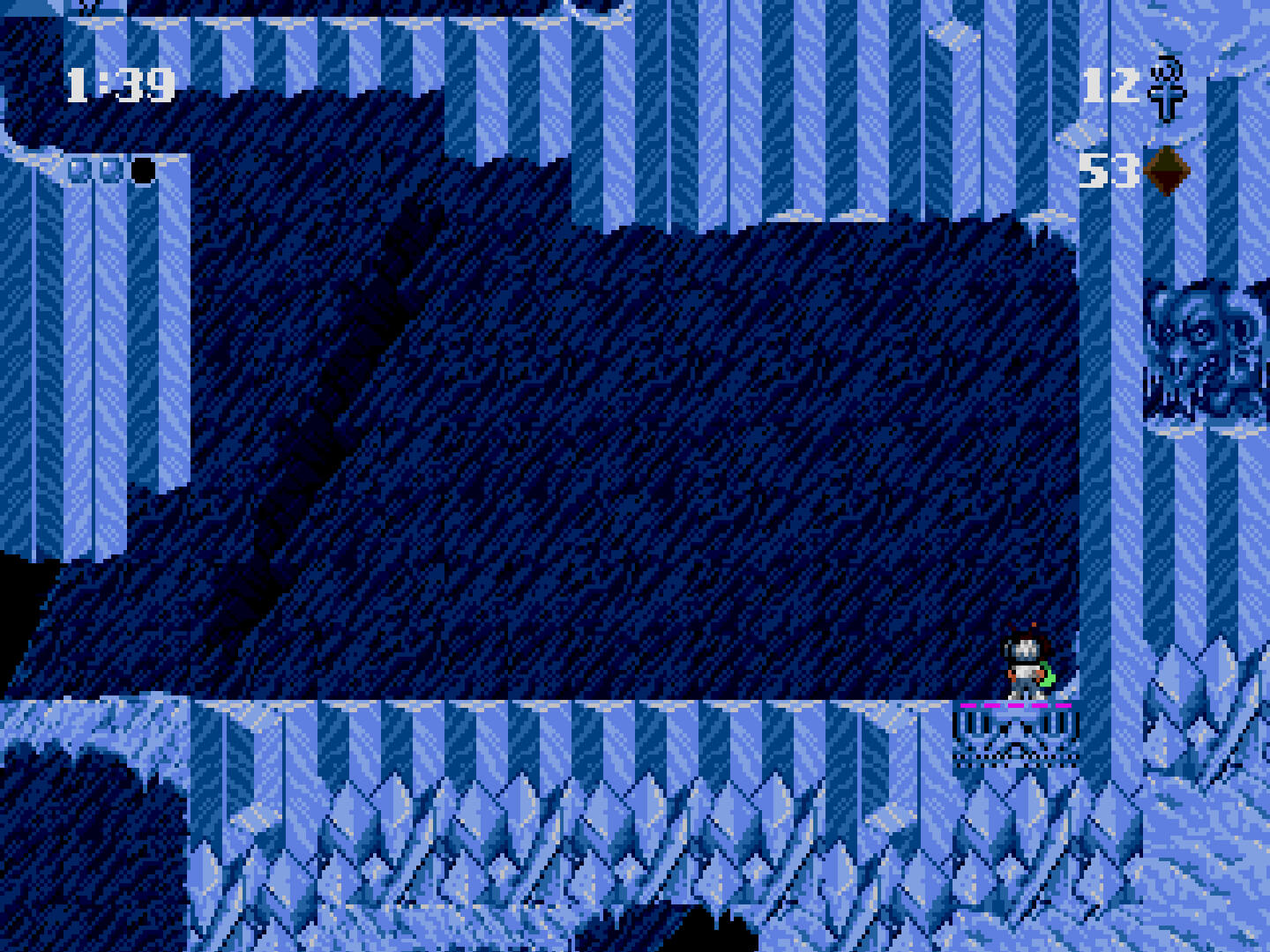
I'll take what's behind teleporter number 2!
Where Kid Chameleon really sets itself apart from other platformer games is in its presentation and its exploration. I mentioned before how there's over 100 levels and you don't visit them all in one playthrough. There are lots of different places that take you to lots of different levels that you can easily avoid or just overlook, and it'll take you over a dozen whole playthroughs to find them all (assuming that you don't look up a map of the game). Almost every level is chock-full of hidden secrets that give you extra items, shortcuts, or means of accessing entire other levels. This makes the game extremely replayable, much more so than any average 2D platformer on the market. If you enjoy games that are filled to the brim with hidden goodies and secrets, then Kid Chameleon will indubitably satisfy you in that regard.
You could take the hidden teleporter which might take you to a different part of the level, or a side-path, or even just where the next level would've anyway. Or you can take a flag.
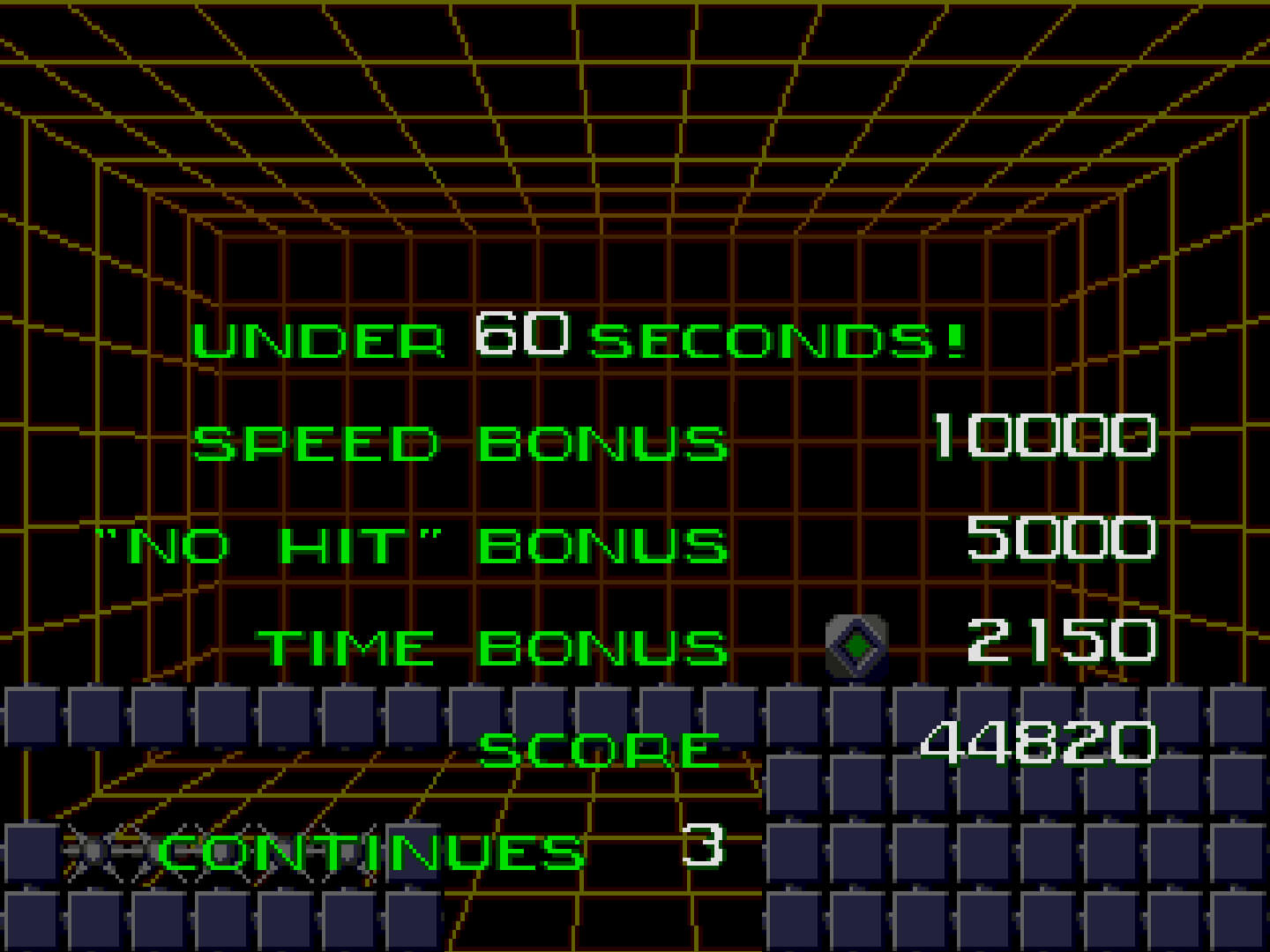
Points, points, points! They do have a point.
Flags are pretty important because finishing levels via a flag is the only way to actually earn points. You can't earn points in the middle of the levels themselves (except via 10,000 point blocks which is the rarest prize in the game). When you finish a level, you'll be rewarded with a bunch of prizes depending on how fast you completed the level, whether or not you beat the level damageless, or whether or not you beat it without collecting any prizes (which is impossible on some levels), and even if the stage was off the main path. This is further accompanied by one of the most satisfying 'score tally' sound effects I've ever heard in a video game. Every 50,000 points you get gives you an extra life, so getting some scores in is a good idea while you can.
This aspect of levels having secret prizes and secret entrances to other levels also gives the game a great sense of discovery. When you play the game for the very first time, I'd suggest actually not looking up any secrets, maps, or walkthroughs on it (unless you're really stuck and you absolutely need it) because the sense of discovering a whole new beaten path that takes you to a hidden bonus stage and then back to another stage on the main path is truly one of the most authentic experiences of Kid Chameleon. However, if you do look those things up later on when you have more experience, then I couldn't really blame you. Once you play through the game quite a few times, you'll likely have a standard route all made out and you can deviate from that route if you want to explore. I wouldn't be able to point everything out because there really are just that many secrets and alternate routes in this game. Whether you like to beat all the levels at breakneck speed or take the time to look at every nook and cranny, the game rewards you either way.
Amazingly enough, for a game with over 100 levels, is that the levels never feel homogenized. Basically every level feels entirely unique from all of the other levels, and to someone familiar enough with the game (like me), you'll know immediately what level you're on just by looking at the name of it.
It's not All Fun and Games

We've all been there.
This presentation relays itself in a myriad of other ways as well. The different types of blocks and formations and how they blend themselves with the natural terrain pretty much becomes instantly iconic. The general aesthetic and feeling of the game is quite unique and it shouldn't take you that long before you pick up on the charm that Kid Chameleon has to offer. Where levels also connect to other levels also gives you opportunities to creatively use helmet abilities to make some levels a breeze if you were able to bring a specific helmet to that specific location.
The biggest means of this though is that it doesn't take too long before this game gets fucking hard. The game is filled to the brim with hidden lives and continues, and if you're playing this game for the first time, you… will… NEED all of the lives you can grab. This game knows how to reward you, but it also knows how to punish you, and sometimes you will be forced to keep helmets for the duration of the stage. It probably won't take you too long before you realize the standard level design conventions of this game (both good and bad) that you don't see in other games.
Fortunately, this is where the levels being quite short helps it out in its favor quite a bit. While some of the levels may be brutally hard, it won't take you that long to get back to where we were when you died and hopefully you should be able to continue in making progress. You'll take quite a few playthroughs before you establish a path that avoids the levels you don't want to play and can make quick work of levels with a certain shortcut or helmet that would otherwise be a bit problematic.
The amount of times that the game's high difficulty borders on being unfair are few and far between (or maybe that's just my experience with the game), and you can usually find an alternate path that cuts that section/level in favor of a different one. Unfortunately, you will be forced to play some excruciatingly difficult levels regardless of what path you take (without using cheats).
Kid Chameleon - Worth Remembering?

Put RoboCop and Ghostbusters together and you get EyeClops.
Ultimately, I think Kid Chameleon is worth remembering for a wide variety of reasons. Despite its similarities with Mario, it's very original in its level design, its gameplay, and its aesthetic. You'd be hard-pressed to find another game that's even remotely comparable to Kid Chameleon in either of these regards. It also has a soundtrack that is very slept on, although you could say that about the entire game.
Kid Chameleon is obviously not perfect. The general difficulty, unconventional structure choices, occasionally wonky physics and coding, and the fact that the game expects you to play it for 3 or even 4 hours in one sitting straight from the first level every single time, is not going to be everyone's cup of tea. However, these flaws are not enough to detract from how insanely fun and creative the game is. Even if you do find yourself frustrated with it at times, regardless of the reasoning, you'll definitely find a lot of things to like and it will eventually stand out in your memory as a game of its own.
I can't exactly pinpoint one specific cause as to why Kid Chameleon flew under the radar in comparison to legends on the Genesis like Sonic the Hedgehog or Streets of Rage. It could've been the game's notorious difficulty, or maybe the game just wasn't marketed that well. Whatever contributed to it though, the game's appeal appears to be strong enough to the point where it's regularly released on Genesis compilations solely by cult appeal alone. If you have access to anything that contains Genesis games on it, then surely it has Kid Chameleon. It's absolutely worth giving this game a try. Not only is it an overlooked diamond for the system with its own distinct charm and ideas, but it also goes to show just exactly how sometimes the best games are not always the most obvious and spoken of.
Have you played Kid Chameleon? Should it have been more popular? Let us know in the comments below!
If you enjoyed reading this retrospective, we recommend checking out the previous ones we've released! Unreal Tournament, Sonic, Golden Sun, they can all be found here.
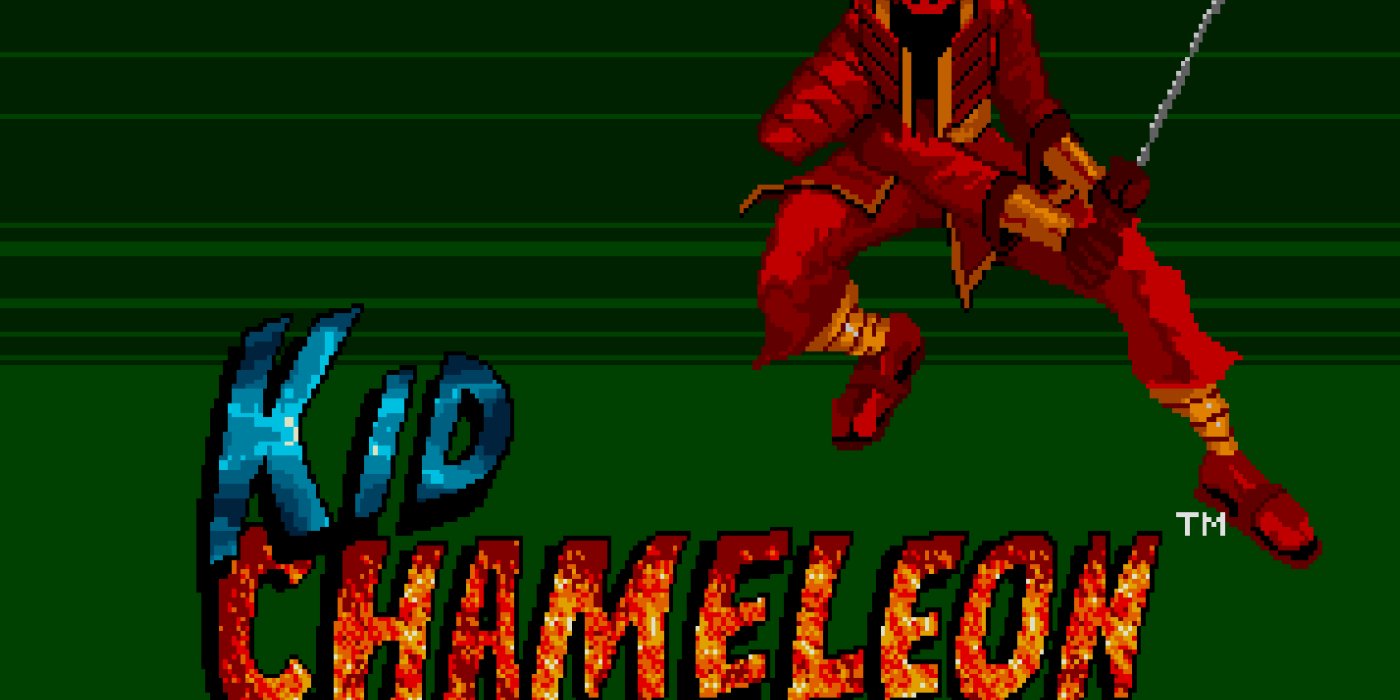
Comments
No Comments Yet. Be the first to create one down below!